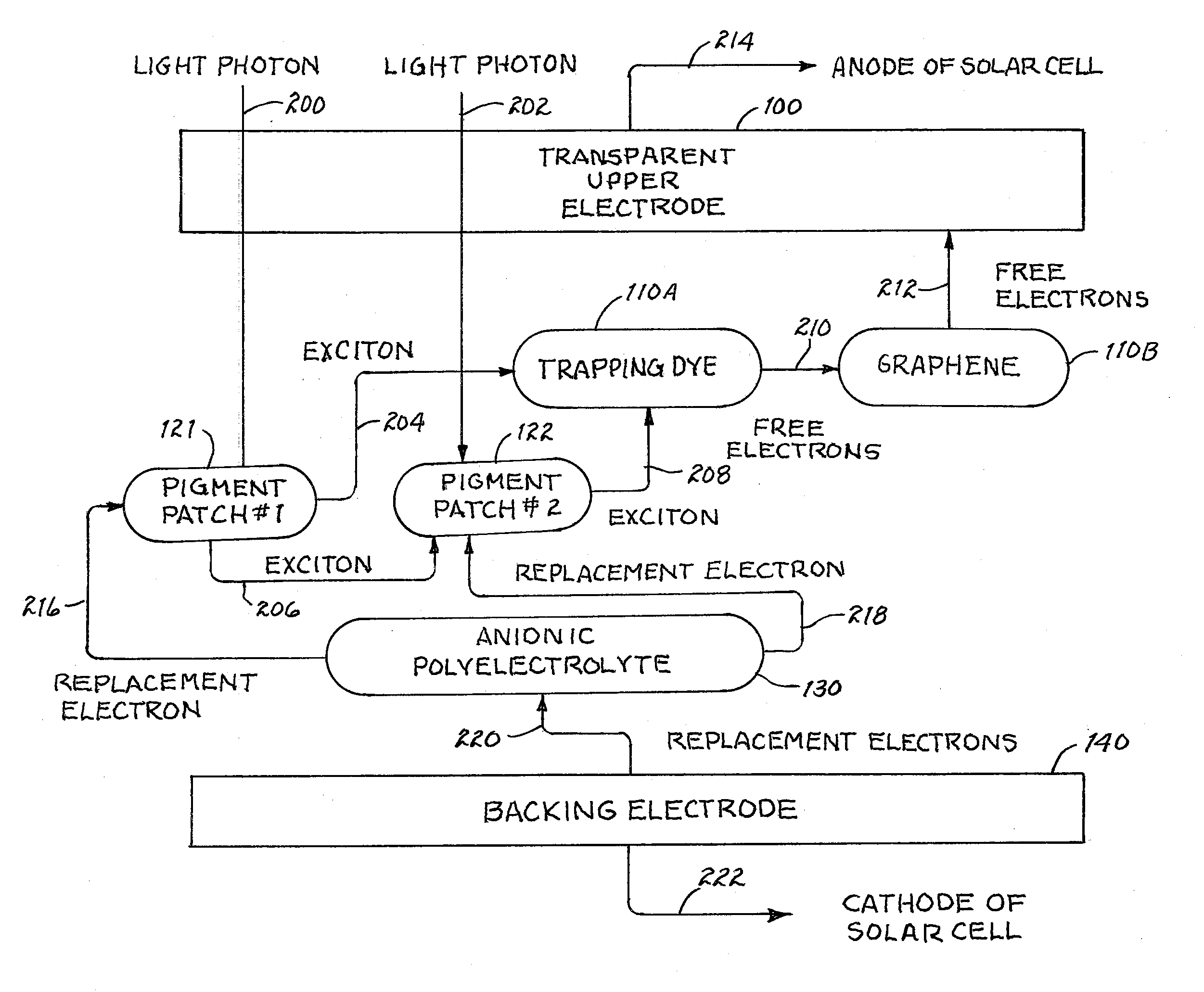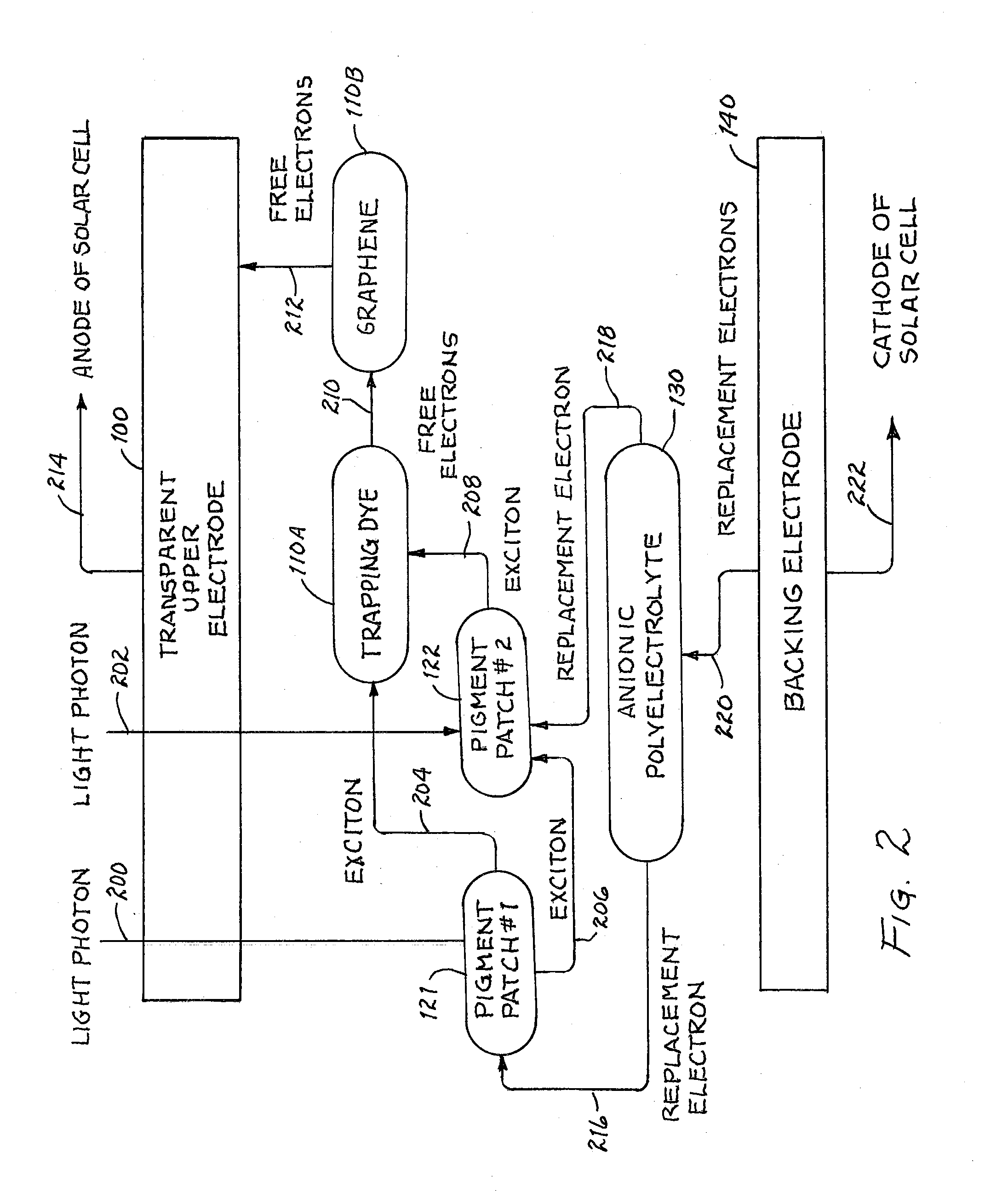Graphene-based solar cell
a solar cell and graphene technology, applied in the field of solar cells, can solve the problems of erratic measurement, erratic measurement, and certain measurements of silicon wafer based solar cells, and achieve the effect of facilitating electron transfer
- Summary
- Abstract
- Description
- Claims
- Application Information
AI Technical Summary
Benefits of technology
Problems solved by technology
Method used
Image
Examples
Embodiment Construction
[0036]Referring to FIG. 1, a solar cell structure is shown in exploded form and is designated generally by reference numeral 101. Solar cell 101 includes an upper electrode (or anode) and light concentrator layer 100. Referring briefly to FIG. 3, upper electrode 100 is formed by depositing a transparent conductive layer 300 on the underside 302 of a transparent top sheet 304 made of a polymer or glass. Once again, such a polymer material may be in the form of a polymer gel. Top sheet 304 preferably forms a light concentrating member; as shown in FIG. 3, the upper surface 306 of top sheet 304 may incorporate a Fresnel to focus incoming light rays 308 and 310, coming from a variety of angles, downwardly, as parallel light rays 312 and 314, respectively, through upper electrode 100. An electrically conductive thin film, such as indium tungsten oxide (ITO), may be used to form transparent conductive layer 300 on the underside 302 of a transparent top sheet 304
[0037]As noted above, light...
PUM
 Login to View More
Login to View More Abstract
Description
Claims
Application Information
 Login to View More
Login to View More - R&D
- Intellectual Property
- Life Sciences
- Materials
- Tech Scout
- Unparalleled Data Quality
- Higher Quality Content
- 60% Fewer Hallucinations
Browse by: Latest US Patents, China's latest patents, Technical Efficacy Thesaurus, Application Domain, Technology Topic, Popular Technical Reports.
© 2025 PatSnap. All rights reserved.Legal|Privacy policy|Modern Slavery Act Transparency Statement|Sitemap|About US| Contact US: help@patsnap.com



